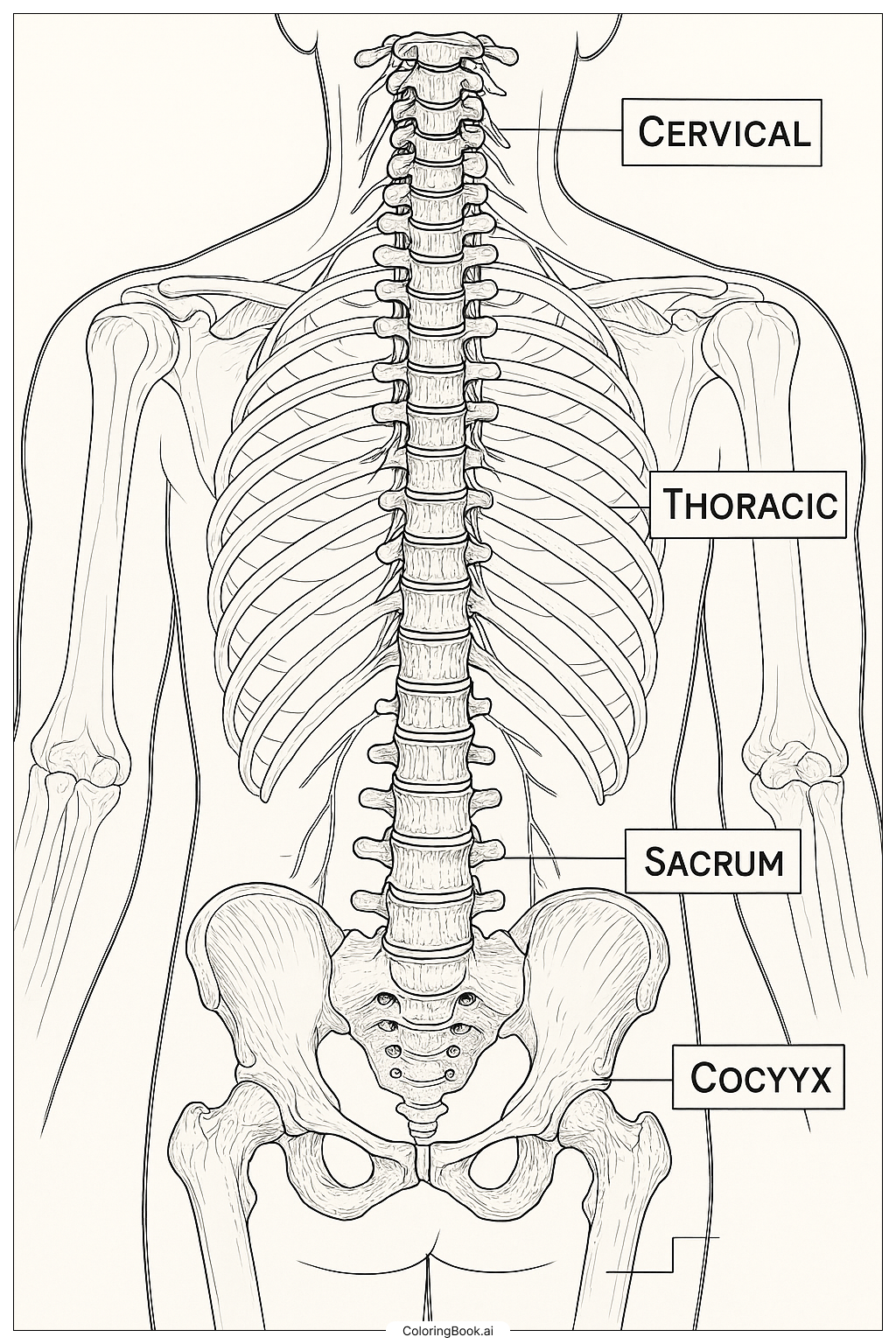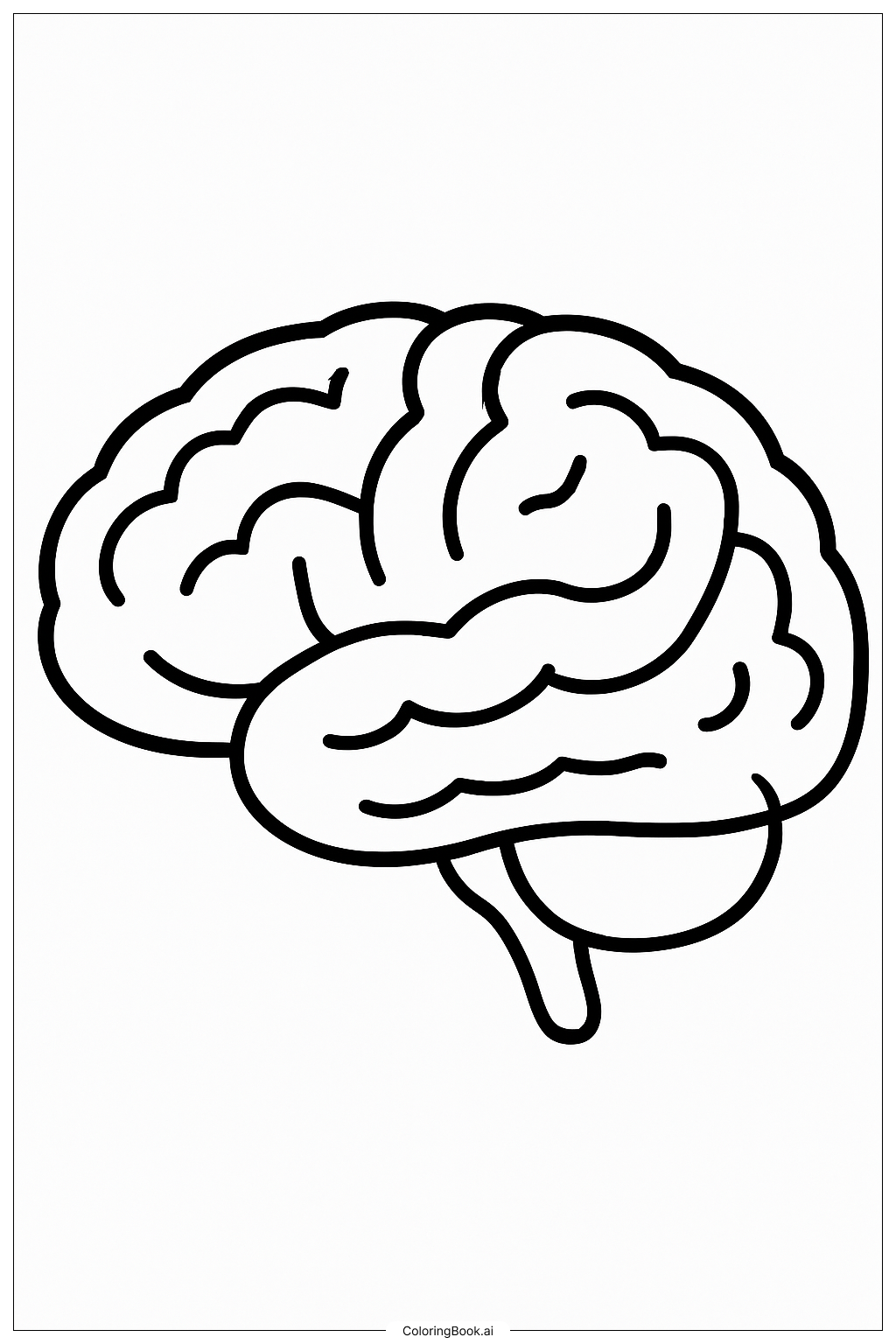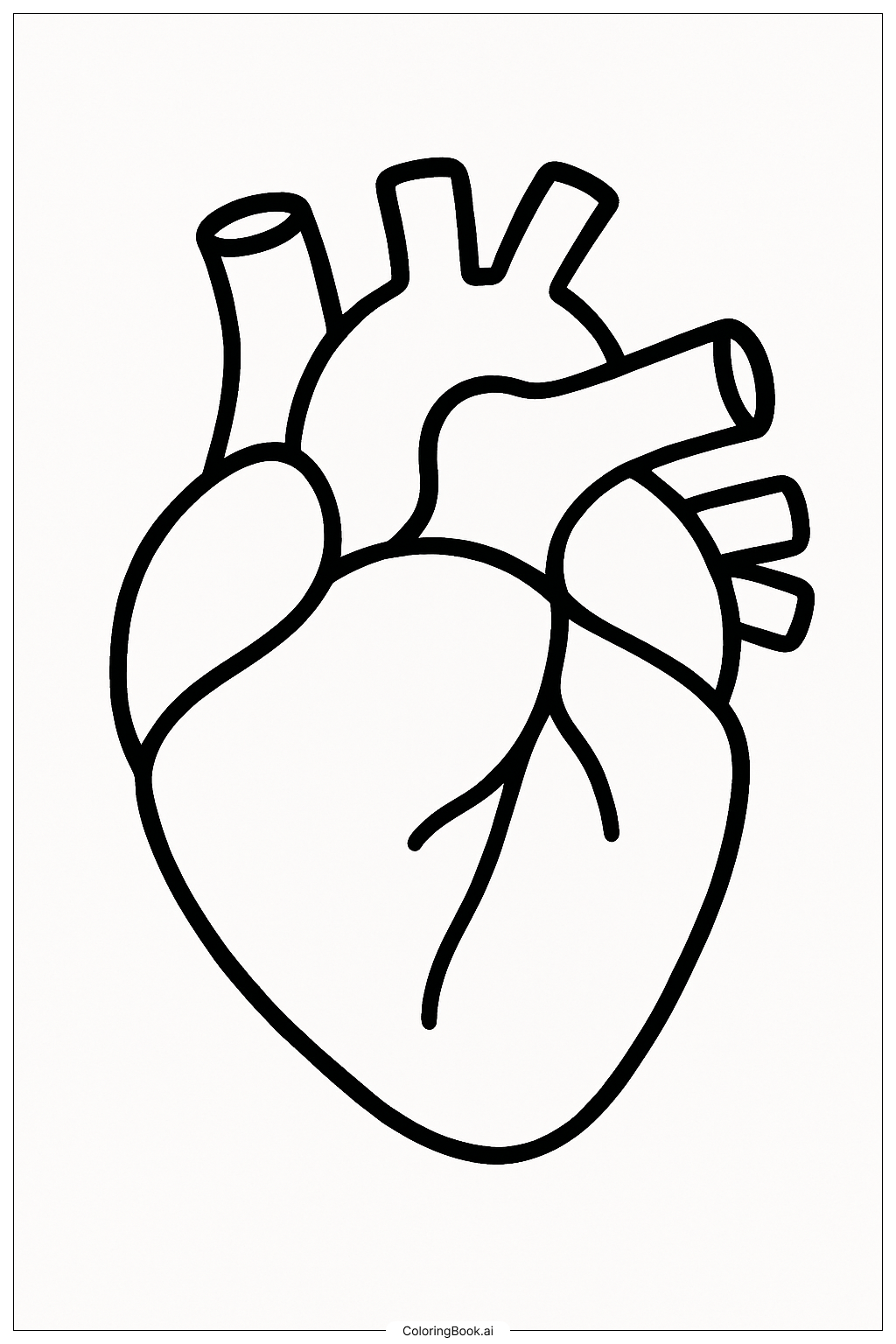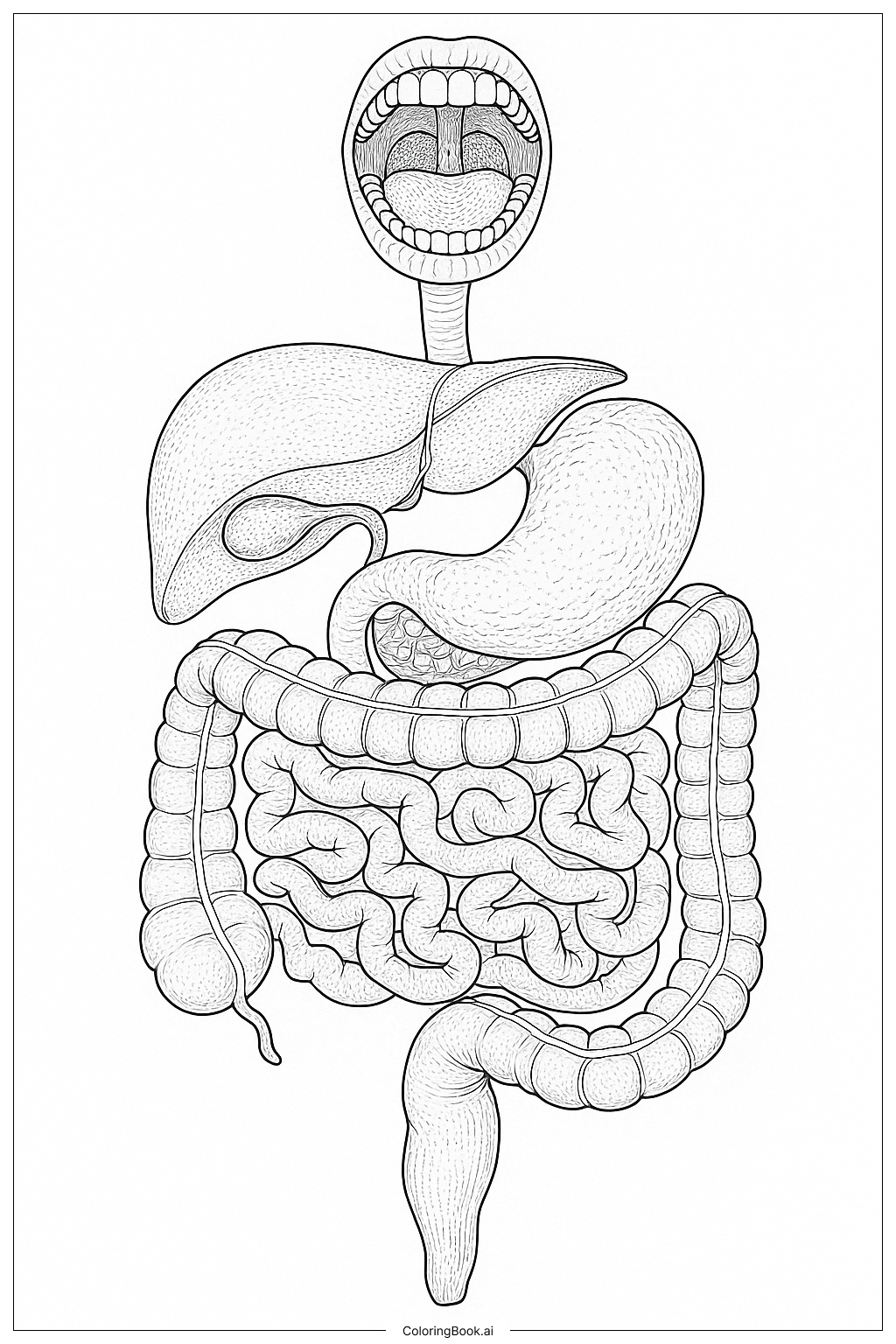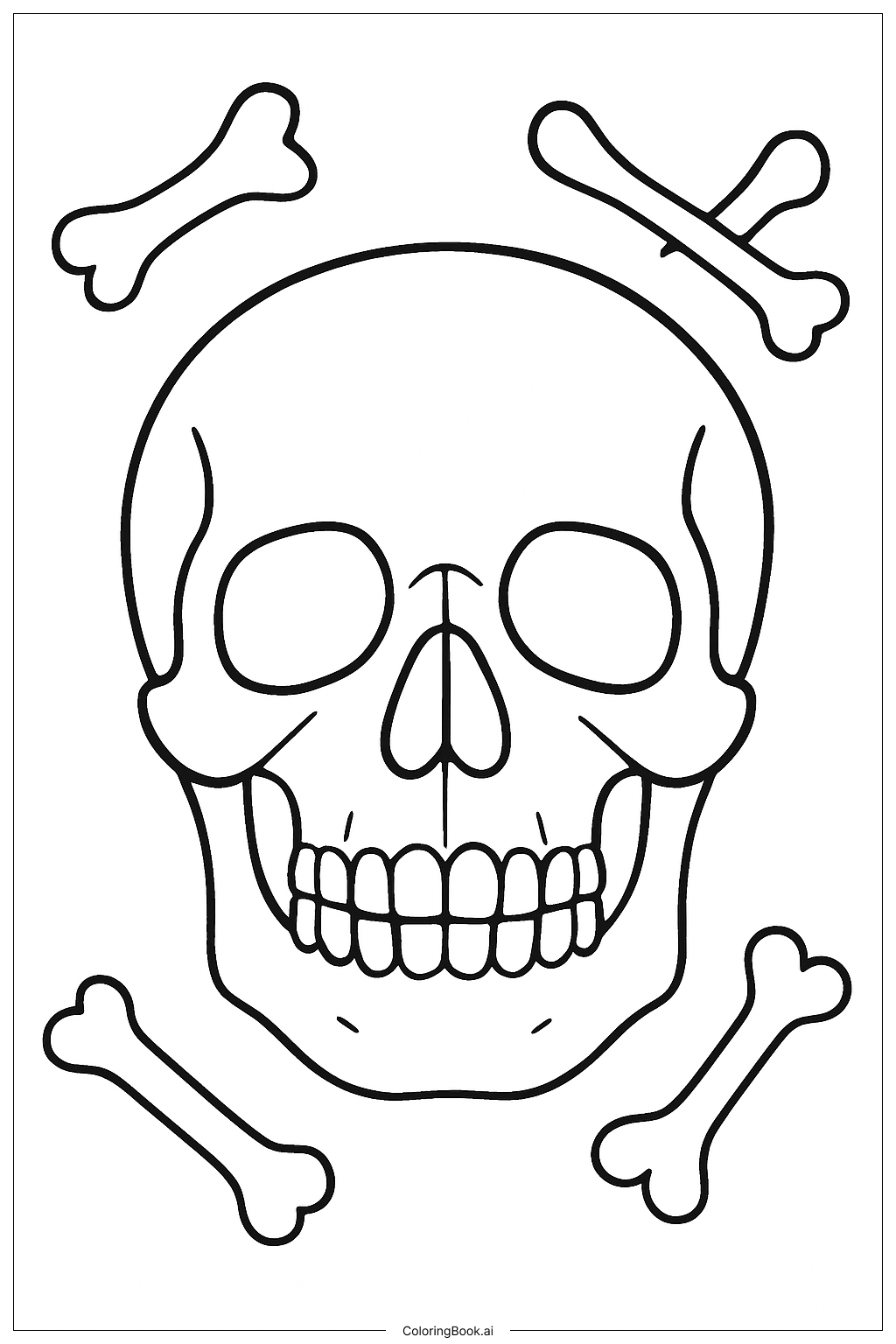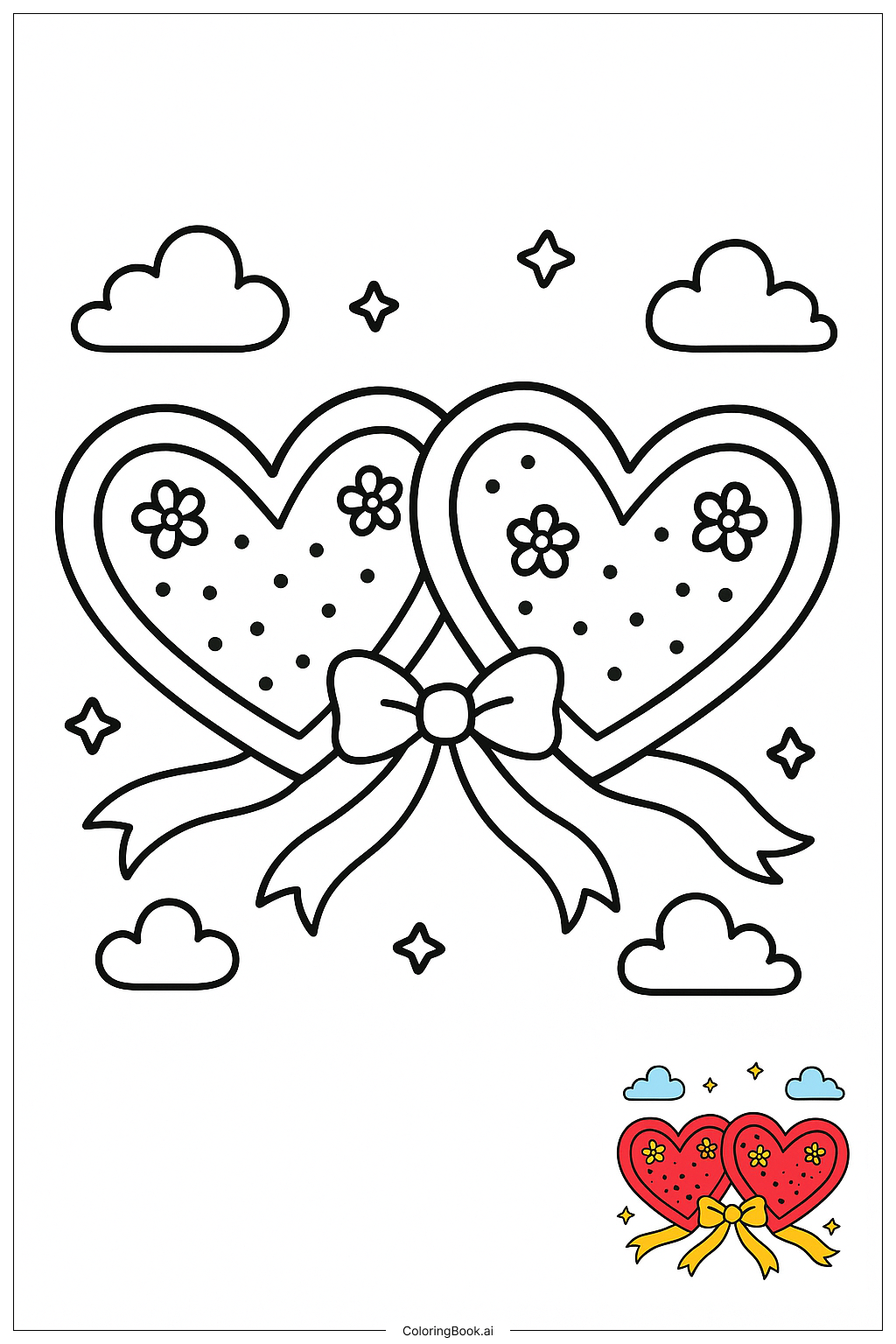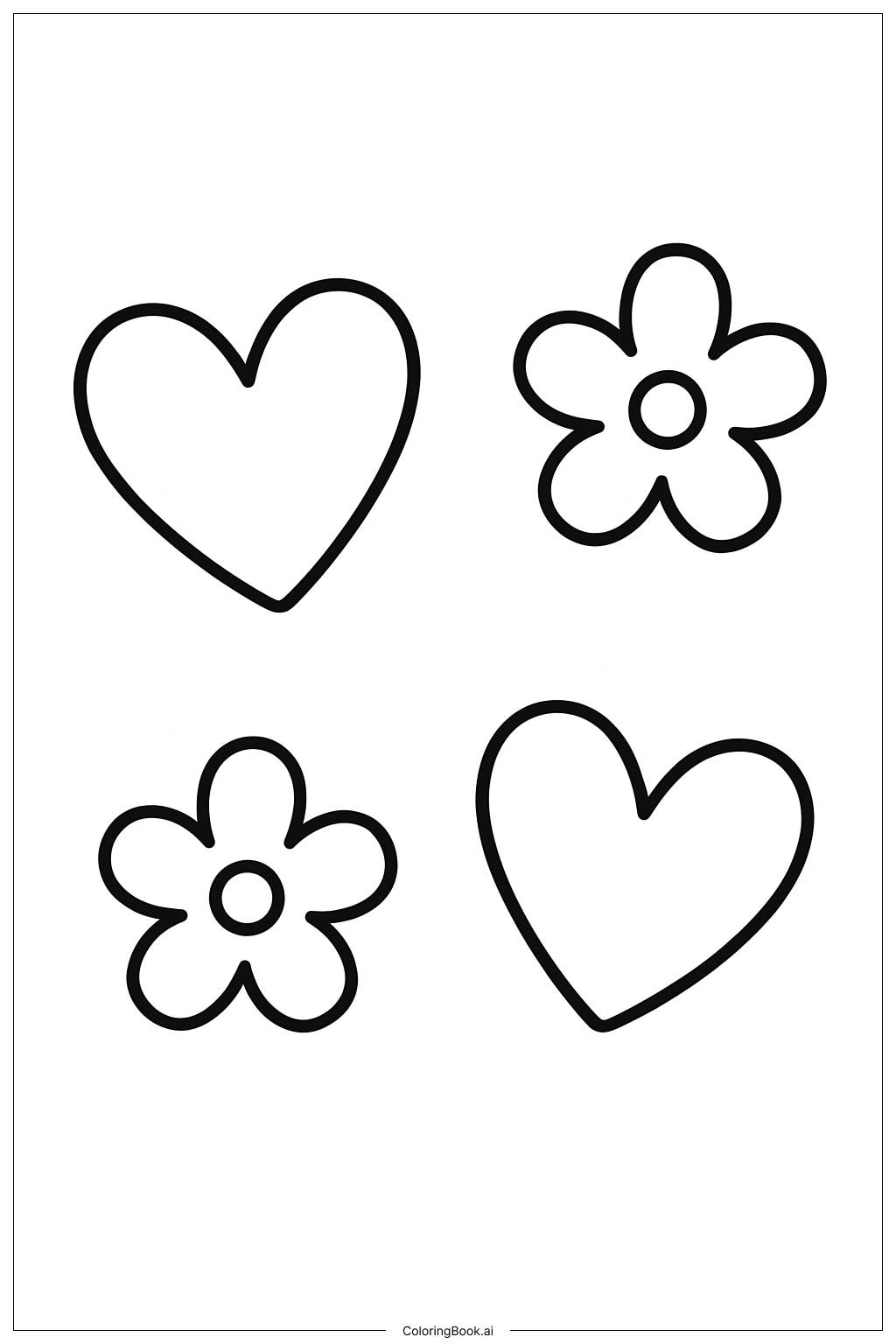Coloring tips: How to color Detailed Spinal Column Anatomy coloring page well?
Use different colors for each part of the spine to make them stand out. For example, color the cervical vertebrae light blue, the thoracic vertebrae green, the sacrum orange, and the coccyx yellow. Use darker colors for the ribs and shoulder bones to create contrast. You can also use shading to show the round shape of the bones. Stay inside the lines to keep the picture neat. Try coloring small areas gently to avoid mistakes.
Coloring challenges: Which parts are difficult to color and need attention for Detailed Spinal Column Anatomy coloring page?
1. Small details: The many small vertebrae and ribs need careful coloring. 2. Close lines: Some bones are very close together, making it hard to color them without crossing lines. 3. Fine labels: The words labeling the spine parts are small and need attention to avoid coloring over them. 4. Bone texture: Showing the texture of bones with color can be tricky, as it requires subtle shading. 5. Staying neat: The complex design might lead to coloring outside the lines, especially for younger children.
Benefits of coloring books: Advantages of drawing Detailed Spinal Column Anatomy coloring page
Coloring this detailed spinal column helps children learn about the human body and bones. It improves their focus as they carefully color small and close parts. It also builds fine motor skills by controlling pencil movements in tight spaces. Children can better understand anatomy by seeing the spine in color, making learning fun. This activity encourages patience and attention to detail, important skills for school and daily life.
